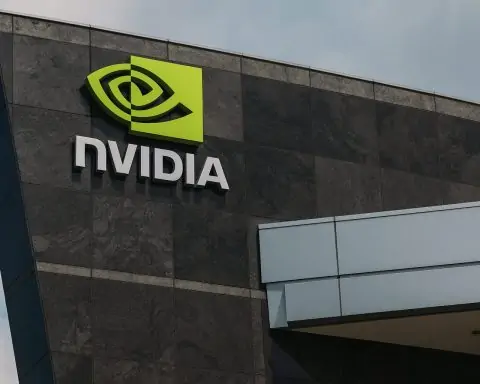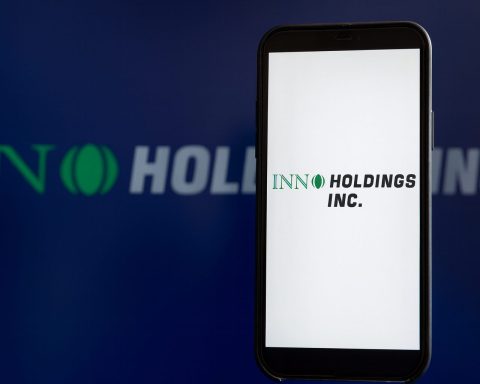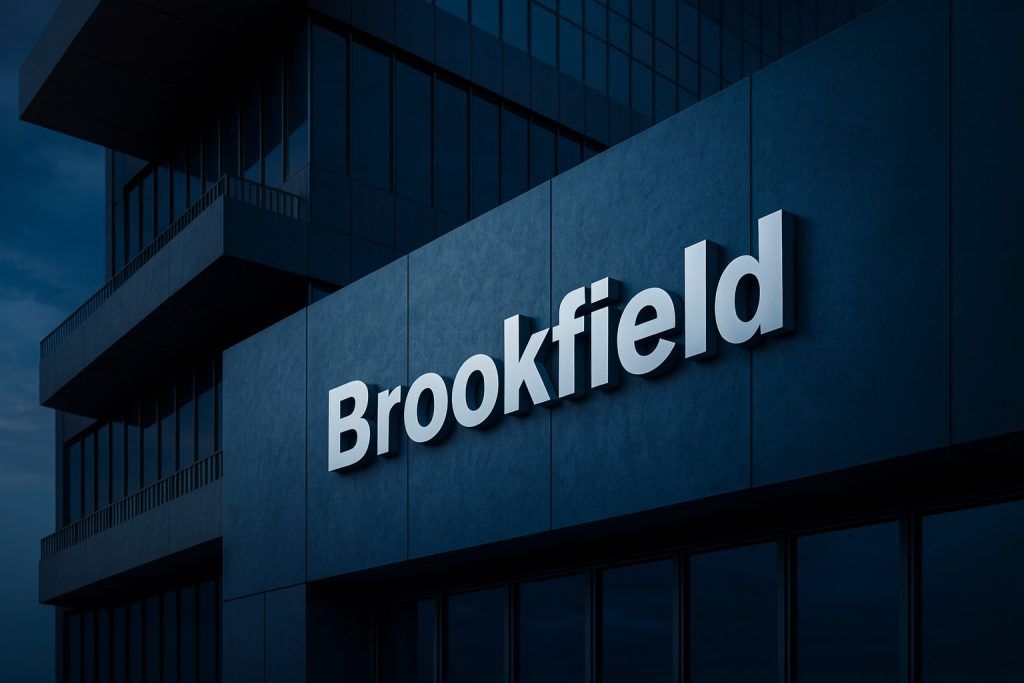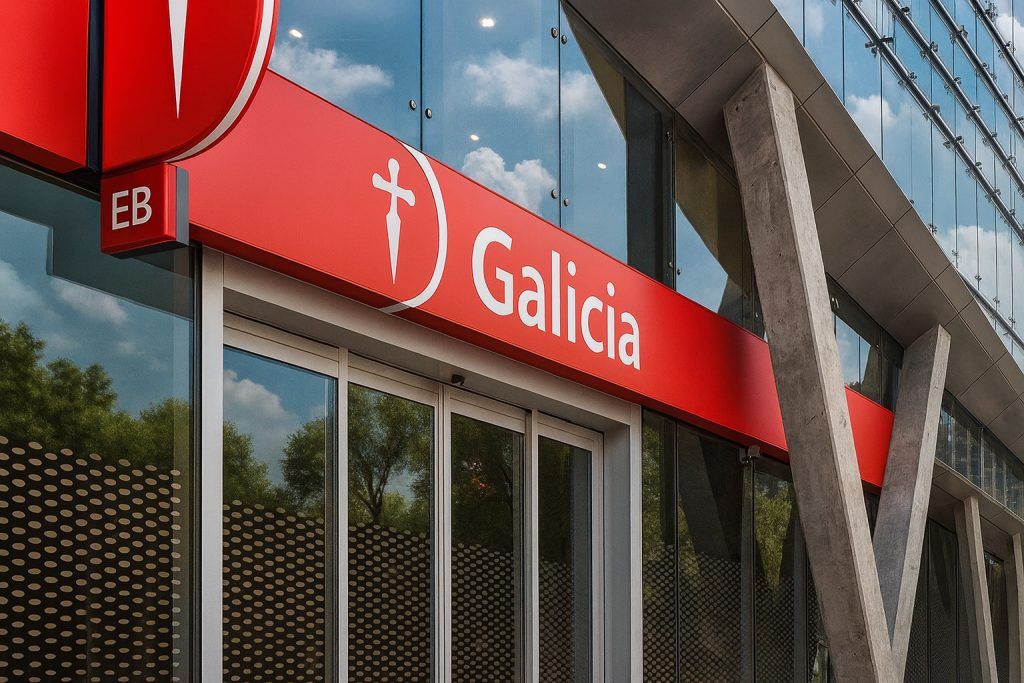- Stock Ticker: Top KingWin Ltd – NASDAQ: WAI
- Current Price: ~$3.50 (mid-day Oct 10, 2025) – a micro-cap penny stock
- Market Cap: ~$5.7 million [1] (extremely small)
- Sector/Industry: Financials – Capital Markets (corporate training & AI services) [2]
- IPO Date: April 18, 2023 (raised $11M at $4.00 per share) [3]
- 52-Week Range: $2.35 – $500.00 [4] (post-split; massive volatility)
- Recent Performance: Down ~98% year-to-date [5] and near all-time lows, but rebounding above $3 this week after a compliance boost
Company Background & Business Model
Top KingWin Ltd is a China-based provider of corporate business training, consulting, and advisory services focused on entrepreneurship and capital markets [6]. The company’s core business offers financial education and transaction advisory support to small and medium-sized enterprises (SMEs) in the PRC. In addition, Top KingWin has expanded into the technology arena – it sells devices to support artificial intelligence (AI) data collection and analysis for clients [7]. This dual model (financial training plus AI hardware) reflects management’s strategy to blend corporate consulting with tech solutions.
Founded in 2018 and headquartered in Guangzhou, China, Top KingWin operates via subsidiaries to drive its tech initiatives. For example, its wholly-owned unit Guji Technology focuses on AI hardware and supply chain services [8]. In late 2024, Guji ordered 1,300 servers to bolster Top KingWin’s AI business infrastructure [9], and the company established a new subsidiary (“Tomorrow Innovation”) to lead intelligent system integration [10]. These moves underscore Top KingWin’s push into the AI and robotics space alongside its consulting business. The company’s mission is to equip entrepreneurs with both the knowledge and tools (like AI-driven devices) to succeed – a unique combination in the capital markets education niche [11].
Stock Performance: Last Year and Last Week
One-Year Rollercoaster: Top KingWin’s stock has experienced an extreme rollercoaster ride since its 2023 IPO. Initially priced at $4, WAI became caught up in a wave of speculative trading common to small Chinese IPOs. In fact, shares saw a meme-like rally after listing – at one point briefly spiking to a split-adjusted $500 per share in intraday trading [12] [13]. (This surge coincided with a broader frenzy in micro-cap Chinese stocks [14].) However, those lofty levels did not last. Over the past year, WAI has collapsed by roughly 99% from its peak and is down ~98% year-to-date [15]. The stock spent much of 2025 sliding steadily and even hit an all-time low around $2.35 this year [16] as investor enthusiasm faded. To put the decline in perspective, Top KingWin was trading at the equivalent of ~$214 at the start of 2025, and by early October it was around $3 [17] – a stunning destruction of shareholder value.
Several factors contributed to this plunge: dilution and financing deals (see Financial Highlights), persistent losses, and waning hype after the initial spike. The company’s tiny float and low market cap have also made it prone to high volatility and manipulation, as noted by analysts [18]. (One InvestorPlace commentator warned that with a sub-$20M valuation, WAI is “easy for investors to manipulate” and thus extremely volatile [19].) This volatility is evident in its beta of ~2.33 – meaning WAI tends to swing over 2× more than the market on any given day [20].
Recent Week Bounce: In the past week, Top KingWin’s stock has actually shown signs of life, albeit with characteristic turbulence. Coming off late-September highs, WAI dipped to about $2.95 by Oct 8 [21]. But positive news (see below) spurred a rebound. On Thursday Oct 9, the stock closed at $3.06 [22], and on Friday Oct 10 it surged as high as $3.95 in pre-market trading – a 29% jump from the prior close [23]. That early-morning spike propelled WAI to roughly +15–20% week-to-date. The rally cooled after the open (shares traded around the mid-$3s by midday Oct 10), but the short-term momentum is up.
Notably, this week’s bounce followed a major regulatory reprieve for the company (regaining Nasdaq compliance), which appeared to restore some investor confidence. Even so, WAI remains ~75% lower than its price just three months ago [24] and far below its 52-week highs – a reminder that huge percentage moves are par for the course with this micro-cap. Traders should be prepared for continued whiplash, as modest dollar moves translate into double-digit percentage swings at these price levels.
Recent News & Press Coverage (Oct 2025)
The past few days have brought critical news for Top KingWin: Nasdaq granted the company a compliance reprieve, allowing WAI to stay listed after it was in danger of delisting. On October 7, 2025, Top KingWin announced it received formal notification from Nasdaq confirming the stock had regained compliance with the exchange’s $1 minimum bid price rule [25] [26]. This comes after WAI had languished under $1 (pre-reverse-split) for an extended period. However, the Nasdaq panel attached strings to this reprieve – Top KingWin is now subject to a one-year “Panel Monitor” period during which any relapse below the required price threshold will trigger immediate delisting with no grace period [27]. In other words, the company dodged the bullet for now, but it must keep its share price up or risk swift removal from Nasdaq. This news was covered by outlets like TipRanks, which noted the compliance win but warned that failure to maintain it could significantly impact investor confidence [28].
The Nasdaq update was not a surprise – it was effectively the outcome of actions Top KingWin had already taken. In late August, the company had received a delisting notice due to its share price drifting below $1 [29]. To cure that deficiency, management enacted a 1-for-25 reverse stock split on September 8, 2025 [30], artificially boosting the stock price by reducing shares outstanding. (For example, every 25 pre-split shares became 1 share, so the price per share jumped 25× overnight.) Initially, the reverse split lifted WAI well above $1, but the stock had slipped back toward the $2–3 range by early October. Fortunately, it stayed above the minimum bid level long enough to satisfy Nasdaq’s criteria, resulting in the Oct 7 compliance confirmation. Investors generally greeted this as good news – avoiding a Nasdaq delisting removes an overhang that often scares off institutional investors. Indeed, pre-market on Oct 10 WAI spiked nearly 30% on heavy volume [31], a move likely linked to relief over the Nasdaq decision (and possibly some short covering).
Beyond the Nasdaq saga, Top KingWin’s biggest recent headline was a business development that has injected new optimism into this tiny company. On September 28, the company revealed (via SEC filing) that its subsidiary entered a sales contract with Walker Times International (Hong Kong) to sell 10,000 units of Top KingWin’s “TK-D2C” AI robots at $480 each [32]. The total deal value is approximately $4.8 million. Importantly, the contract stipulates the robots are to be delivered in batches through October 2025 (suggesting fulfillment is underway or imminent). This news – essentially Top KingWin’s first major AI hardware sale – electrified the stock. WAI shares soared as much as 80–81% intraday when the contract was announced [33], and trading volume exploded to many times the average, reflecting a frenzy of speculative buying. Market commentators noted that this pivotal deal could open new revenue streams for Top KingWin and “fortify its position” in the competitive tech arena [34]. The story was picked up by finance outlets (StocksToTrade, Benzinga News, etc.), highlighting investor excitement around Top KingWin leveraging AI trends.
Aside from these two major items (Nasdaq compliance and the AI robot deal), there has been little other press in the past few days. No new earnings release or guidance has been issued yet this quarter. One older item circulating in some feeds was a note that Top KingWin’s subsidiary Guji Technology achieved RMB 2 million in revenue in October 2024 [35] – a historical data point that underscores how small the company’s sales have been (RMB 2M is only ~$0.3M USD). Overall, current coverage is laser-focused on the survival and growth prospects signaled by the Nasdaq ruling and the Walker Times contract. These developments have put WAI back on the radar of penny stock traders. However, investors are also aware that the clock is ticking: Top KingWin needs to deliver (literally, on the robot contract) and improve its financials to justify the recent rally. Any further official news – e.g. confirmation of robot deliveries or upcoming earnings on Nov 24 – will likely drive the next big move in the stock.
Analyst & Expert Opinions
Given its small size, Top KingWin has very limited Wall Street analyst coverage. In fact, no major investment banks or research firms officially cover WAI at this time (no consensus estimates or price targets are available) [36]. MarketBeat data indicates the stock has essentially one analyst rating on record – which is a “Sell” [37]. In a recent comparative survey, analysts “plainly believe” a larger peer (Houlihan Lokey) is far more favorable than Top KingWin, underscoring the lack of confidence in WAI from traditional finance analysts [38]. This paucity of coverage isn’t surprising; many institutions avoid micro-caps under $100M due to liquidity and risk concerns [39]. However, it does mean investors have to rely on alternative sources and their own due diligence for insight on WAI.
Despite the cold shoulder from Wall Street, some independent analysts and bloggers have weighed in on Top KingWin’s prospects, especially after the recent AI deal. Notably, on trading forums and niche finance sites, sentiment has turned more upbeat. StocksToTrade, which tracks momentum plays, upgraded its view on WAI following the robot contract news – describing analyst sentiment as “positive.” In a breakdown of fundamentals, one StocksToTrade expert pointed out that Top KingWin’s liquidity and book value appear strong relative to its market price. According to their analysis, WAI has substantial working capital (~$35 million) and its price-to-book ratio is only ~0.22, suggesting the stock trades at roughly 22% of its book value (i.e. potentially undervalued on an asset basis) [40]. The same review noted Top KingWin’s price-to-sales ratio is around 1.4 [41] – low for a tech-adjacent company – indicating the market has very low expectations for growth. These factors led the commentator to conclude there’s a case for the stock being undervalued at face value [42]. However, the bullish take came with caveats: Top KingWin’s profitability metrics are dire, with a return on equity of about -1.5% and consistently negative earnings [43]. The company’s assets might exceed its liabilities (a good sign for solvency), but it is not generating profits, and that fundamentally limits its fair value.
Other experts emphasize the speculative nature of WAI. Because the stock is so small, over half of its shares (53.4%) are actually held by institutions [44] – an unusually high figure for a micro-cap – which could reflect insider holdings or early investors. This concentrated ownership can contribute to volatility if any one holder decides to sell. Some veteran market observers have urged caution: “penny stocks” like WAI can be the playground of manipulators and are prone to sudden swings on rumors [45]. As InvestorPlace’s Will White noted, the low float and low price “make them easy to manipulate,” so anyone trading WAI should be prepared for outsized risk [46].
That said, the recent news has certainly caught the attention of speculative traders in a positive way. As one commentator put it, “news of a contract to sell 10,000 AI robots… powered a substantial rally in WAI shares”, and if the company can build on this momentum, it could “outperform amid favorable conditions” [47]. The general vibe in penny-stock circles is that Top KingWin is a high-risk, high-reward play: it has a foothold in hot themes (AI, robotics, fintech training) but also serious financial challenges. Until more concrete results are seen, professional analysts are likely to remain skeptical. In summary, expert opinions are mixed – with mainstream analysis effectively saying “avoid” (or ignoring the stock), while speculative traders and bloggers see a potential undervalued gem if Top KingWin’s gambles pay off.
Financial Highlights & Recent Earnings
Top KingWin’s financial performance to date has been weak, reflecting an early-stage company with more ambitions than revenues. In the most recent full year reported, 2024, the company generated $3.75 million in revenue, which was a 31% drop from the prior year’s $5.45 million [48]. This decline indicates a contraction in their training/consulting business or lack of new deals. Worse, net losses ballooned – Top KingWin lost -$8.68 million in 2024, a 240% deeper loss than 2023’s loss [49]. The negative trend in earnings shows the firm’s expenses (possibly from expanding into AI and maintaining operations) far outstripped its small revenue base. On a per-share basis, the company’s trailing twelve-month EPS is about -$33 (after adjusting for the reverse split) [50] – indicating heavy losses relative to its tiny share count. Needless to say, Top KingWin has not been profitable since going public, and its accumulated deficit continues to grow.
Balance sheet details from the last filings show Top KingWin had some cash from the IPO, but it has needed additional funding to stay afloat. The company has turned to dilutive financing multiple times:
- In November 2024, Top KingWin announced a $2,500,000 convertible promissory note private placement [51]. This would have provided a cash infusion, but likely at the cost of issuing convertible debt that can turn into equity (diluting shareholders).
- In February 2025, the company went further, entering a securities purchase agreement for a $1,000,000 convertible note with an option for up to $28,500,000 more in additional notes [52]. In theory, if fully exercised, that could have injected up to $29.5M – a huge sum relative to the company’s size – perhaps intended to fund its new AI ventures.
However, it appears that second financing did not go as planned. By July 2025, Top KingWin terminated the securities purchase agreement with those institutional investors [53]. According to a company update, the deal was unwound: any shares issued were repurchased by Top KingWin as treasury shares and the purchasers were refunded [54]. The termination was done via mutual release, with no admission of wrongdoing by either party [55]. The exact reasons aren’t fully clear, but the outcome is that Top KingWin did not end up with that hoped-for ~$29M war chest. This suggests either the terms were unfavorable, investors got cold feet, or Nasdaq had concerns. Regardless, the company’s cash position remains constrained, and it likely will need to seek capital elsewhere if it is to continue funding operations and new projects.
On a brighter note, Top KingWin’s recent $4.8M robot sale, if fully realized, could significantly boost revenue in the current fiscal year. To put that in context: $4.8M is more than the entire revenue of 2024. If the company delivers those 10,000 AI units by the end of 2025, it might roughly double its annual revenue, marking a potential turnaround in sales momentum. Of course, the profitability of that deal is unknown (hardware can have slim margins, and there may be fulfillment costs).
Investors will get more clues soon: the next earnings report is expected on November 24, 2025 [56]. It’s not confirmed whether this will be a full-year 2025 report or a mid-year update (Top KingWin, as a foreign filer, may report semi-annually). But traders will be watching for any disclosure on robot delivery revenues, backlog, and the status of the business training segment. Also critical will be the cash burn rate and remaining cash – essentially, how long can Top KingWin survive without another capital raise? As of the last report, the company had a modest cash runway from its IPO funds, but the widened loss in 2024 suggests it might be running low by late 2025.
In summary, Top KingWin’s financials are highly precarious: declining sales, large losses, and reliance on external financing. The recent AI contract offers a chance to improve the top line, but whether it can reverse the bottom line (profits) remains to be seen. Until we see concrete numbers from the upcoming earnings, caution is warranted. The stock’s fundamentals do not justify its previous highs – any valuation upside hinges on future growth, not past results. (This is likely why the stock trades at such a low P/S and P/B ratio, as mentioned earlier.) For now, investors are essentially betting that “this time it’s different” – that Top KingWin’s pivot to AI and its Nasdaq survival will eventually translate into real financial improvement.
Technical Analysis Overview
From a technical perspective, WAI has been a wild ride but shows some recent bullish signals mixed with ongoing risks. The 52-week trading range alone ( ~$2.35 to $500 [57]!) tells the story of extreme volatility. After the 1-for-25 reverse split in September, the stock’s chart reset; initially WAI traded around $3 post-split, then ran to over $5 by late September, and pulled back to the $3 level by early October [58]. This saw-tooth pattern reflects highly reactive trading largely driven by news catalysts.
In late September’s rally, momentum indicators flashed bullish: WAI broke through short-term resistance and moved above its key moving averages. Traders noted a strong uptrend with heavy volume – a classic breakout scenario. One technical analysis highlighted that WAI’s weekly price action breached resistance levels with a notable volume surge, suggesting a sustained uptrend at that time [59]. Specifically, chartists identified the ~$4.50 area as a newfound support and ~$5.00 as a resistance ceiling after the breakout [60]. Indeed, the stock topped out just above $5 on September 26 (hitting ~$5.21 intraday) before sellers stepped in [61]. The inability to push past the $5–$5.20 zone led to a short-term reversal – essentially, profit-taking kicked in at that resistance.
Since then, momentum cooled. By early October, WAI fell below its short-term support (the mid-$4s) and drifted back into the $3s, indicating a loss of upside momentum. Technical indicators responded accordingly: short-term moving averages (e.g. 20-day MA) rolled over to a mild sell signal, reflecting the recent dip [62]. However, interestingly, the longer-term trend still tilts positive due to the post-split jump – the stock’s 50-day moving average remains below the current price, and the short-term average is still above the long-term average, yielding a general “buy” signal in the trend model despite the pullback [63]. In other words, WAI’s chart hasn’t broken down completely; it’s in a volatile uptrend, with a high risk of whipsaw. The Relative Strength Index (RSI) for WAI recently was in the low-to-mid 40s [64], which is neutral to slightly oversold – a far cry from the overbought conditions right after the 80% spike. This suggests there is room for the stock to run again if new buying interest emerges, at least from a momentum standpoint.
Looking ahead, traders are watching a few key technical levels. On the downside, ~$3.00 (roughly last week’s lows) is a near-term support zone, with the post-split all-time low of $2.35 as the ultimate line in the sand [65]. A fall back into the $2s, especially towards $2.35, could trigger stop-loss selling or renewed compliance fears. On the upside, resistance is expected around $4.00, then heavier resistance around the $5.00 mark. If WAI can break above $5 with conviction (likely requiring strong news or earnings), that would be a significant bullish technical signal – it would mark new post-split highs and clear out a lot of overhead supply from the last rally. Volume is another factor: the stock’s average volume was around ~930K shares recently [66], but it spiked to over 12 million shares on the late-Sept surge [67]. Continued high volume (millions of shares) would be a sign that momentum traders are still active, whereas a slide back to low volume could make the stock more prone to drifting or manipulation.
In summary, Top KingWin’s technical picture is mixed. The stock enjoys some bullish trend indicators after its recent jump, but it has not established a stable uptrend yet. Volatility is extremely high, and technical signals can flip quickly in such a stock. Cautious traders might wait for confirmation that WAI is holding above support (and/or breaking key resistance) before taking a position. It’s worth reiterating that technical analysis on a micro-cap like this is less reliable – sudden news can invalidate chart patterns instantly. Nonetheless, the current bias leans slightly bullish in the medium term (thanks to the post-split uptrend) [68], while short-term signals urge some caution until the stock proves it can maintain its recent gains. As always, tight risk management is crucial when trading a chart like WAI’s.
Short-Term & Long-Term Outlook / Forecast
What does the future hold for Top KingWin stock? Given the company’s speculative nature, forecasts vary widely and come with huge uncertainty. No official Wall Street price targets exist for WAI, so the projections that do exist are largely from automated models or small-scale analysts.
Near-Term (Next Few Weeks/Months): The primary driver in the short term will be news flow and execution. On one hand, there are positive catalysts in play: Top KingWin’s $4.8M robot contract could translate into a jump in revenue in upcoming results, and the stock now has a fresh lease on life after averting a Nasdaq delisting. These could fuel bullish sentiment a bit longer. Some algorithms are mildly pessimistic, however. For instance, CoinCodex’s quantitative forecast expects WAI to ease back about -3.9% to ~$2.94 by early November 2025 [69]. That model currently shows a Bullish technical sentiment but nonetheless predicts a slight price dip, reflecting the choppiness of the current trend [70]. Essentially, after the recent pop, the model sees consolidation. It’s worth noting that as of this writing WAI is trading above CoinCodex’s one-month target, so the stock has some work to do to justify its recent jump. Another site, StockInvest.us, identified WAI as a “buy or hold” candidate since the late-September rally, but also reported that from that entry point the stock had incurred a -34% loss as of Oct 9 [71] – reinforcing how quickly gains can evaporate.
Market sentiment in the short term will hinge on the Nov 24 earnings release. Any update on how much of the 10,000 AI robots have been delivered (and recognized as revenue) will be critical. If Top KingWin surprises with better-than-expected numbers or additional contracts, the stock could see another leg up. Short-term price swings could easily retest the $4–$5 zone on good news. Conversely, disappointment (e.g., delays in the robot project or lack of improvement in losses) may send WAI back toward its lows. Remember, Nasdaq’s one-year monitoring means the company must keep its stock above $1 – so in the near term, avoiding any catastrophic drop is as important as trying to rally. We can likely expect the company to do everything in its power (favorable PR, etc.) to support the stock price over the next year.
Long-Term (1–5+ Years): Forecasting WAI several years out is extremely speculative. The company is essentially in startup mode within its new AI business, and it’s too early to tell if it can achieve sustainable growth. Automated long-term forecasts take a relatively bearish view. CoinCodex’s model, for example, suggests that by 2030 WAI could trade in the $1.80 to $3.14 range [72]. In fact, their projection has Top KingWin decreasing over the coming years, possibly only around $3.14 by 2029 (roughly 13% lower than today) [73]. In one 2030 scenario, the algorithm sees WAI as low as ~$1.29 at the bear case [74]. Essentially, these models aren’t convinced Top KingWin will ever be worth dramatically more than it is now – a sobering outlook that implies the recent rally could fade without fundamental improvement. It’s important to stress that such long-range predictions are based on current data trends and technical factors; they do not account for big fundamental changes. If Top KingWin manages to, say, become a leader in a niche of China’s AI training or robotics market, the story (and valuation) could be very different.
From a qualitative standpoint, the long-term prospects for Top KingWin hinge on a few key factors: 1) Execution in AI/Tech – Can they successfully deliver these 10,000 AI robots, and will that lead to follow-on orders or new product offerings? 2) Core Business Stability – Is the traditional consulting/training division stabilizing or still shrinking? and 3) Financial Health – Will Top KingWin secure the funding to continue operating and growing (without disastrously diluting shareholders)? The company’s ability to navigate these will determine if WAI stock is a multi-bagger or headed to obscurity.
It’s possible that Top KingWin, with its very small size, could also become a takeover or merger candidate if it develops promising tech. Alternatively, it could pivot again to another business model (small caps in trouble sometimes try new ventures). Such scenarios are unpredictable but could impact the long-term outcome.
Investor Consensus: As of now, the consensus (where it exists) is cautious for the long term. With no proven profitability and a need for cash, Top KingWin is not viewed as a sound long-term investment by traditional measures. Analysts comparing it to established firms outright favor the established ones [75]. However, for short-term oriented traders, WAI remains on the watchlist due to its ability to generate explosive moves on news. It’s the classic high-risk penny stock: one significant breakthrough (or meme-style speculation) could send it soaring again, while setbacks could see it collapse.
Bottom Line: In the short term, expect continued volatility around news events – Nov 24’s earnings and any updates on the AI contract are major near-term catalysts. In the longer term, Top KingWin’s stock trajectory will mirror the company’s execution. If management can turn the recent AI foray into a sustainable revenue stream and contain costs, WAI could gradually recover and justify a higher valuation. If not, the stock may well languish or even drift back toward Nasdaq’s danger zone once the initial excitement wears off. Prospective investors should keep in mind the words of caution surrounding micro-caps: this is a speculative bet, not a sure thing. As one financial commentator noted, with tiny stocks like WAI, “there’s always another setup around the corner” [76] – implying one must be nimble and prepared for anything. In sum, Top KingWin has a shot at near-term upside if it delivers on promises, but its long-term destiny remains highly uncertain. Approach with caution, and watch those key developments closely.
Sources: Recent press releases, market data, and analysis were used in compiling this report, including StockAnalysis [77] [78], GlobeNewswire and SEC filings, TipRanks News [79] [80], Benzinga/StocksToTrade updates [81] [82], MarketBeat/ABMN comparisons [83] [84], ChartMill pre-market reports [85], and CoinCodex forecasts [86] [87], among others. Each provides additional context on WAI’s recent performance, corporate actions, and expert commentary as of October 10, 2025.
References
1. stockanalysis.com, 2. stockanalysis.com, 3. seekingalpha.com, 4. stockanalysis.com, 5. www.marketbeat.com, 6. stockanalysis.com, 7. stockanalysis.com, 8. stockanalysis.com, 9. stockanalysis.com, 10. stockanalysis.com, 11. www.americanbankingnews.com, 12. stockanalysis.com, 13. stockanalysis.com, 14. stockanalysis.com, 15. www.marketbeat.com, 16. stockanalysis.com, 17. www.marketbeat.com, 18. investorplace.com, 19. investorplace.com, 20. www.americanbankingnews.com, 21. stockinvest.us, 22. stockinvest.us, 23. www.chartmill.com, 24. www.chartmill.com, 25. www.tipranks.com, 26. www.tipranks.com, 27. www.tipranks.com, 28. www.tipranks.com, 29. stockanalysis.com, 30. www.marketbeat.com, 31. www.chartmill.com, 32. www.sec.gov, 33. stockstotrade.com, 34. stockstotrade.com, 35. stockanalysis.com, 36. stockanalysis.com, 37. www.americanbankingnews.com, 38. www.americanbankingnews.com, 39. investorplace.com, 40. stockstotrade.com, 41. stockstotrade.com, 42. stockstotrade.com, 43. stockstotrade.com, 44. www.americanbankingnews.com, 45. investorplace.com, 46. investorplace.com, 47. stockstotrade.com, 48. stockanalysis.com, 49. stockanalysis.com, 50. stockanalysis.com, 51. stockanalysis.com, 52. stockanalysis.com, 53. www.tipranks.com, 54. www.tipranks.com, 55. www.tipranks.com, 56. stockanalysis.com, 57. stockanalysis.com, 58. stockstotrade.com, 59. stockstotrade.com, 60. stockstotrade.com, 61. stockstotrade.com, 62. stockinvest.us, 63. stockinvest.us, 64. www.benzinga.com, 65. stockanalysis.com, 66. www.benzinga.com, 67. www.benzinga.com, 68. stockinvest.us, 69. coincodex.com, 70. coincodex.com, 71. stockinvest.us, 72. coincodex.com, 73. coincodex.com, 74. coincodex.com, 75. www.americanbankingnews.com, 76. stockstotrade.com, 77. stockanalysis.com, 78. stockanalysis.com, 79. www.tipranks.com, 80. www.tipranks.com, 81. stockstotrade.com, 82. stockstotrade.com, 83. www.americanbankingnews.com, 84. www.americanbankingnews.com, 85. www.chartmill.com, 86. coincodex.com, 87. coincodex.com








